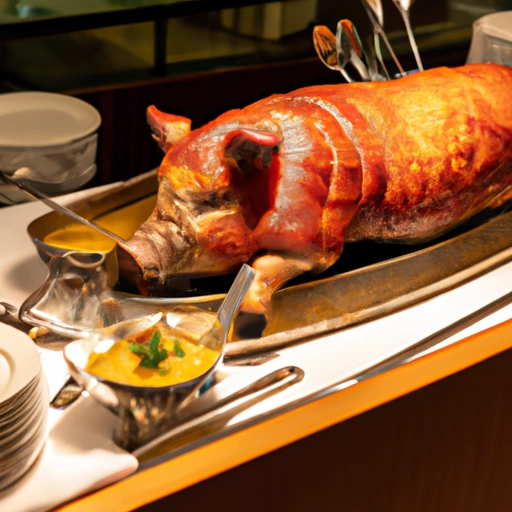Suckling Pig
Description

Suckling pig is a young pig, typically between two and six weeks old, that has been fed on its mother's milk. Known for its tender meat and delicate flavor, it is a gourmet food item cherished in various cuisines around the world. The pig is usually roasted whole, often for special occasions and traditional feasts. Suckling pig's succulent and soft flesh, combined with its crispy skin when cooked, makes it a sought-after dish among epicureans and chefs alike.
Common uses
Suckling pig is commonly used as a centerpiece for large gatherings, celebrations, and holiday feasts. It is also a traditional ingredient in various regional dishes, where it is often roasted, braised, or grilled to showcase its natural flavors.
Nutritional value
Calories
A 3-ounce (85g) cooked serving of suckling pig contains approximately 250-300 calories.
Protein
This serving size provides about 16-21 grams of protein, which is essential for muscle growth and maintenance.
Fat
Suckling pig is relatively high in fat, with around 20-25 grams per serving, including saturated fats.
Carbohydrates
It contains minimal carbohydrates, as it is primarily composed of protein and fat.
Vitamins
The meat is a source of B-vitamins, particularly Vitamin B12, which is crucial for nerve function and blood formation.
Minerals
It also provides minerals like zinc and iron, important for immune function and oxygen transport in the blood.
Health benefits
While suckling pig is rich in protein and B-vitamins, it should be consumed in moderation due to its high fat content. The protein in suckling pig can help in building and repairing tissues, while the B-vitamins play a role in energy metabolism.
Potential risks
The high levels of saturated fat and cholesterol in suckling pig may increase the risk of heart disease if consumed in excess. It is recommended to balance its intake with other lean protein sources and a variety of fruits and vegetables.
Common recipes
Suckling pig is the star ingredient in dishes such as the Spanish 'cochinillo asado', the Filipino 'lechon', and the Italian 'porchetta'.
Cooking methods
The most popular method of cooking suckling pig is roasting, which ensures a crispy skin and tender, flavorful meat. Other methods include grilling and slow-braising.
Pairing with other ingredients
It pairs well with a range of sides, from roasted vegetables to mashed potatoes, and is complemented by both red and white wines, depending on the preparation.
Summary
Suckling pig is an age-old delicacy favored for its tender meat and rich flavor. While it is a celebrated dish in many cultures, its high fat content calls for moderate consumption. When prepared and enjoyed responsibly, suckling pig can be a highlight of culinary experiences, leaving a memorable impression on the palate.